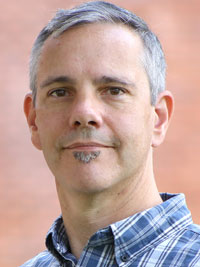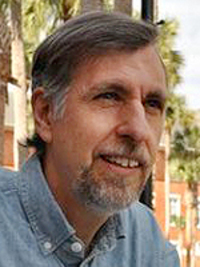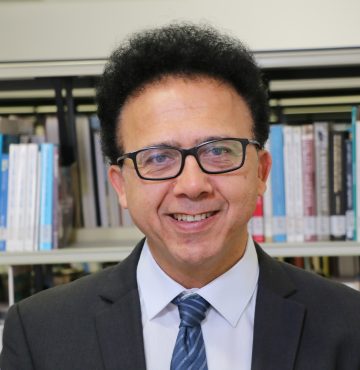The National Science Foundation has awarded Stetson University a $200,000 grant to develop a new chemistry and biochemistry curriculum centered around hands-on labs and research using a state-of-the-art 400 MHz nuclear magnetic resonance (NMR) spectrometer.
Through the NSF’s Transforming Undergraduate Education in Science (TUES), Technology, Engineering and Mathematics program, Stetson will develop new ways to use NMR instrumentation in a broad range of chemistry courses. The new curriculum will then be made available for use by other colleges and universities nationwide.
“The award of this most competitive National Science Foundation grant is a significant recognition of Stetson’s excellence in cutting-edge natural science education,” said Dr. Elizabeth “Beth” Paul, provost and vice president for academic affairs at Stetson. “I commend the excellence and strong leadership of our chemistry faculty in this major accomplishment.”
“We’re very thrilled,” said Assistant Professor of Chemistry Dr. John T. York, the faculty member overseeing the project. “This is an extremely competitive national grant program, and our contribution will help to transform the way undergraduates study chemistry and biochemistry.”
The Marshall E. Rinker, Sr. Foundation, Inc. of West Palm Beach contributed $100,000 toward the purchase of the NMR spectrometer. The new NMR will be ordered this summer and installed this fall in Sage Hall, the primary teaching and research facility for the Natural Sciences at Stetson. Faculty will then begin to incorporate use of the NMR spectrometer into all chemistry and biochemistry courses – from beginner-level to advanced. The instrument will also be available for student and faculty research, an integral part of undergraduate education at Stetson.
Currently, about 300 students per year are enrolled in chemistry and biochemistry classes and labs from at least 12 different majors ranging from integrative health science to aquatic and marine biology. Thus, all students in the Natural Sciences at Stetson would gain experience in using this real-world research instrumentation, not just chemistry and biochemistry majors. The NMR spectrometer is the most powerful tool chemists have for the characterization and identification of chemical compounds.
“In traditional undergraduate training, students get limited access to this instrumentation, mainly through organic chemistry,” York said. “But evidence shows students learn best through doing. The NMR spectrometer is the best and most widely used tool in chemistry, and we believe it can and should be used more broadly throughout the chemistry and biochemistry curriculum.”
“We want to give students hands-on experience with state-of-the-art equipment,” he said. “They will get to use this instrument themselves. This will help them understand concepts that are otherwise just abstract ideas.”
Initially, Stetson will use existing laboratory experiments based on the NMR, an instrument used widely in collegiate science education and in chemical research. As part of the three-year project, the university also will develop new lab experiments and manage a nationwide chemical education database for other colleges and universities to use. Stetson will also create tools to assess and evaluate the effectiveness of the new curriculum.
Stetson’s chemistry and biochemistry programs are accredited by the American Chemical Society.
The new project is the latest in Stetson’s recent efforts to strengthen science education. Many of those initiatives support federal goals to increase the number of students in science, technology, engineering and mathematics fields – disciplines at the heart of the nation’s scientific infrastructure.
The NSF is currently funding a $610,000 renovation of five science research labs in Sage Hall – three for chemistry and two for biology. Those renovations are being completed this summer. A number of upgrades were made to the 1960s-era Sage Hall between 2003 and 2008, including the purchase of state-of-the-art science instrumentation. In 2009, the university opened its 22,000-square-foot Science Center, which is attached to Sage Hall, and the Rinker Environmental Learning Center.
The university is midway through a six-year program in which the NSF is providing scholarships for students majoring in chemistry or physics. Stetson’s Division of Natural Sciences added its first two endowed, distinguished faculty chairs in 2009 – new Lynn and Mark Hollis Chair of Health and Wellness and the Cici and Hyatt Brown Faculty Fellow & Visiting Professor Program.
In addition, the Marshall E. Rinker, Sr. Foundation, Inc. gift toward the NMR will help students in chemistry courses for years to come and represents a portion of the foundation’s philanthropy toward science facilities at Stetson.
The university has had a major emphasis in recent years on increasing the number of students majoring in science, attracting more minority and women students to the science disciplines, and reaching out to environmental organizations and high school students and teachers.
See original post



